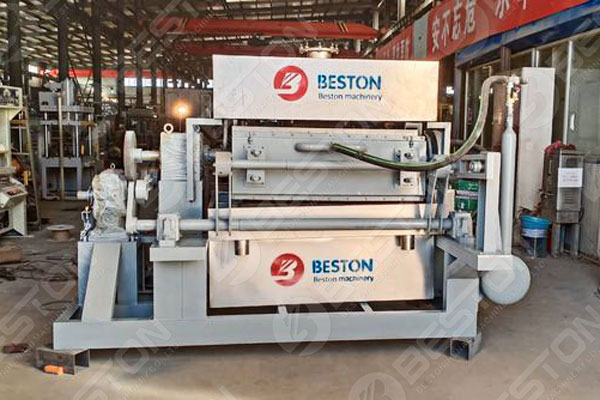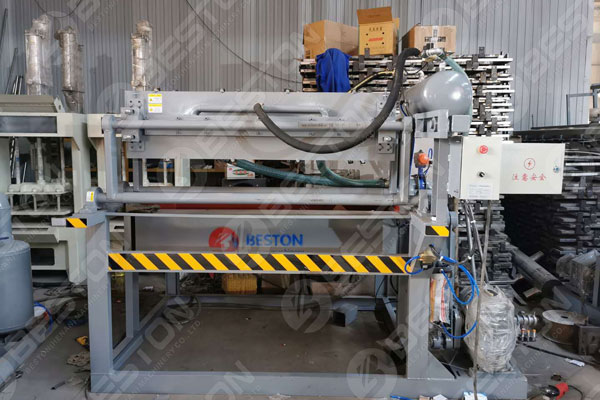
Proper maintenance of an egg carton machine is crucial for ensuring long-term performance and operational efficiency. Neglecting routine upkeep can lead to equipment failures, reduced productivity, and costly downtime. By implementing best practices, operators can extend the lifespan of their machines and optimize production outputs.
Regular Cleaning and Inspection
Daily cleaning is essential to prevent pulp buildup and residue accumulation within the machine. Over time, debris can obstruct critical components, leading to inefficiencies or mechanical malfunctions. Operators should clean molds, forming dies, and transfer mechanisms to maintain precision and consistency in the final product.
Inspection should accompany cleaning. Regularly examining belts, bearings, and hydraulic systems allows for early detection of wear and tear. Identifying minor issues before they escalate helps avoid expensive repairs and production interruptions.
Lubrication of Moving Parts
Proper lubrication is a cornerstone of egg box machine maintenance. The moving components, such as shafts, rollers, and gears, require consistent lubrication to reduce friction and minimize wear. Using high-quality lubricants suited to the machine’s operating conditions can significantly enhance performance.
It is advisable to follow the manufacturer’s guidelines regarding lubrication intervals and recommended products. Over-lubrication or the use of inappropriate lubricants may lead to component damage or operational inefficiencies.

Calibration and Alignment
Over time, prolonged operation can affect the calibration and alignment of an egg tray manufacturing machine. Misaligned molds or feeding mechanisms can result in defective products and material wastage. Regular calibration ensures that the machine continues to operate at optimal parameters.
Technicians should periodically test the alignment of the forming and drying systems. Making necessary adjustments will maintain product uniformity and minimize rework or scrap rates.

Preventive Maintenance Schedule
A structured preventive maintenance schedule is vital for ensuring uninterrupted operations. This schedule should include routine checks of electrical systems, hydraulic lines, and control panels. Testing sensors and safety mechanisms is equally important to uphold workplace safety standards.
Operators should document maintenance activities to track performance trends and identify recurring issues. Such records can inform decisions about potential upgrades or replacement of components, improving long-term cost efficiency. This is important for pulp tray machine.
Replacement of Worn Components
Even with meticulous maintenance, parts of the machine will inevitably wear out over time. Proactively replacing worn components such as conveyor belts, nozzles, and valves can prevent unexpected breakdowns. Using original equipment manufacturer (OEM) parts ensures compatibility and maintains the machine’s integrity.
Operators should also stock spare parts to reduce lead times during repairs. Quick access to critical components minimizes downtime and keeps production schedules on track.
Training and Competency
Operator training is often overlooked but plays a significant role in effective maintenance. Trained personnel can identify irregularities and perform basic troubleshooting, reducing reliance on external technicians. Regular workshops and refresher courses ensure that staff stay updated on the latest operational techniques and safety protocols.
Additionally, operators familiar with the specific design and functionalities of a pulp molding equipment are better equipped to carry out maintenance tasks accurately.
Energy Efficiency and Operational Checks
Energy efficiency directly impacts the machine’s overall operating costs. Operators should monitor energy consumption levels and check for any irregular spikes. Such fluctuations could indicate inefficiencies or mechanical faults.
Routine operational checks, including testing drying systems and monitoring water pressure in pulp preparation, contribute to maintaining consistent efficiency levels. Small adjustments made during these checks can lead to significant energy savings over time.
Conclusion
Maintaining an egg carton machine requires a comprehensive approach that includes cleaning, lubrication, calibration, and proactive repairs. By adhering to a structured maintenance regimen and investing in operator training, businesses can ensure that their equipment remains efficient and reliable. Proper care not only extends the lifespan of the machine but also enhances production quality, ultimately driving profitability.